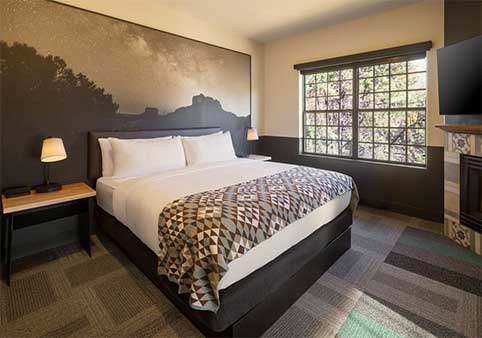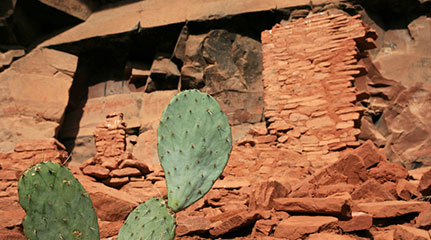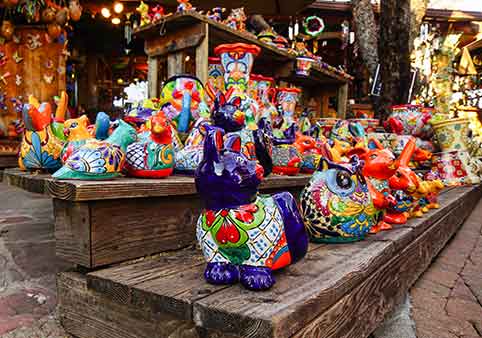The Sinagua
Sedona's first Indians evolved from hunter/gatherers to more efficient people. Around 650 A.D. pottery and agriculture appeared, and the rise of the people now known as the Sinagua soon began. Most of the ruins in the Verde Valley are Sinaguan. With the switch to agriculture, they created pit houses with grass-thatched roofs and developed trade routes with the Anasazi to the north and the Hohokam to the south. By 800 A.D. Hohokam irrigation systems emerged that still work to this day, and by 900 A.D. handball courts were created throughout the Verde Valley. The handball courts show a link with the cultures further south, possibly the Aztecs and/or Maya. They grew corn, beans, and squash, and traded expertly-woven cotton and red clay pottery with people as far away as Mexico and the Pacific Coast. The Sinagua also kept dogs and parrots as pets, and wild turkeys as a food source.
In the years that followed, they created breathtaking adobe structures some with up to thirty-five rooms capable of housing hundreds of people. In Sedona, there are several Sinaguan sites that you can visit: Honanki is in the western canyons; Tuzigoot sits just outside Cottonwood; and Montezuma's Castle and Well are located off I-17 in Rimrock and Camp Verde.
Then, little more than a century later, the Sinagua mysteriously disappeared after hundreds of years of development at the peak of their civilization! The reason why is one of the biggest mysteries in the Southwest and is known as The Great Abandonment. It is estimated that over 5,000 Sinagua inhabited the Verde Valley, that’s a lot if you consider modern Sedona has a population of fewer than 14,000 permanent inhabitants.
Many believe the Sinagua migrated north to the Hopi Mesas to join other ancestral Puebloan cultures. The Hopi name for their legendary home is Palatkwapi: Place of Red Rocks.” Some may have stayed and intermarried with the Yavapai—who had just arrived—and returned to a hunter/gatherer lifestyle.
The real question is why they left an area so rich in resources when all the evidence suggests that they were quite successful. Some in Sedona today claim that the Sinagua holy men saw the coming of the white man and knew it was time to go little over a hundred years after the Sinaguans left, the Spanish came through the area, but it's more likely they met their first Apaches and knew the times they were changing.
In 1583, the Antonia de Espejo Expedition encountered the Yavapai while passing through the Verde Valley. By this time, the Tonto Apache had also moved into the area, living a seemingly peaceful existence with the Yavapai. The Spanish were on their way to nearby Jerome where the Indians mined copper; Espejo had hoped he would find gold but was left unsatisfied. The Native Americans used copper as a pigment for paint, and had no use for it as a metal; furthermore; they had no use for gold and had none in possession when visited. The Spanish left, but the end of an era had begun. By the 1800’s the white man had a permanent presence in the area.
NATIVE AMERICAN ART, CULTURE, & ATTRACTIONS
A Day In The West
Western Experience | Family-Friendly | Activities | Native Culture & Tours | Professionally Guided
Pink Jeep Adventures
Family-Friendly | Native Culture & Tours | Professionally Guided













